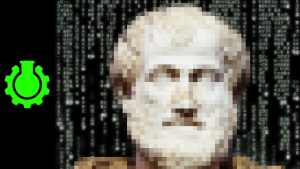Technology: Revolutionary or Redundant? I

My research into how technology is shaping our classrooms will start broadly, with a birds-eye-view of the situation as I encounter it.
Recently, I came across two (somewhat older) Youtube videos: Digital Aristotle: Thoughts on the Future of Education by CGP Grey; and This will Revolutionize Education by Veritasium. I found their content both interesting and relevant in my daily life as a student teacher. In this post, I will examine CGP Grey’s video and try to situate it within my inquiry.
You can find CGP Grey’s video here: https://www.youtube.com/watch?v=7vsCAM170-M&t=3s
CGP Grey’s input matters. Not only is he a prominent Youtuber and therefore, active in new media and technologies, but he was also once a classroom teacher. He has experience on both sides of the educational technology debate and to me that is to be respected and valued.
His video begins by evaluating the role of the classroom teacher as one who communicates curriculum content at the right pace for a minority of students at any given time and he outlines how this is an inefficient and unjust approach to education. He then praises the Internet as the revolutionary tool which can provide students with the information a classroom teacher possesses, thereby making them less relevant in the education of children. With the Internet being a cheap resource for learning, it would be possible to imagine a scenario in which schools have fewer classroom teachers. CGP Grey envisions a new approach to education he calls Digital Aristotle for Everyone (DAE) – a computer program that can be personalized to the needs of each individual student, teaching them the content that would normally require the hiring of a handful of private tutors – or classroom teachers. DAE would be able to tutor students individually, test them on what they know, and provide each student with their own personalized education plan. Most importantly, it would make education more affordable. In the short term, DAE would enable teachers to freely navigate through the classroom, providing whatever assistance students may need with the program. In the long term, it would make classroom teaching near-irrelevant, as the DAE AI would know its students better than their teachers. Sounds utopian for students, doesn’t it?
So how does this opinion affect my inquiry into technology and classroom education? Simply put, if DAE is the answer, teachers will soon become relics of the past (and I made a poor career choice). The teachers left to supervise student learning through DAE wouldn’t be teachers, but something else… a something which CGP Grey doesn’t clearly address. One major issue I had with his video, was his personal view on human civilization, defined through three job types: scientists, doctors, and programmers. Where are the humanities, foods, shop, art, music, P.E., and other teachers? Going further, is the content classroom teachers teach the sum of our value as professionals? Where are the debate clubs, sports teams, drama performances, GSAs, and green clubs that promote leadership, interpersonal skills, social harmony, and environmental stewardship? Where is the humanity in CGP Grey’s view of human civilization? It would appear as though it requires no humans at all – it certainly lacks culture to say the least. Nevertheless, his critique on where classroom education is and where it is going forces us to critically examine how it is that we as a society value public education, if indeed we still do anymore.
In my next post, I will reflect on Veritasium’s This will Revolutionize Education Youtube video.
Until next time,
Alex M.


